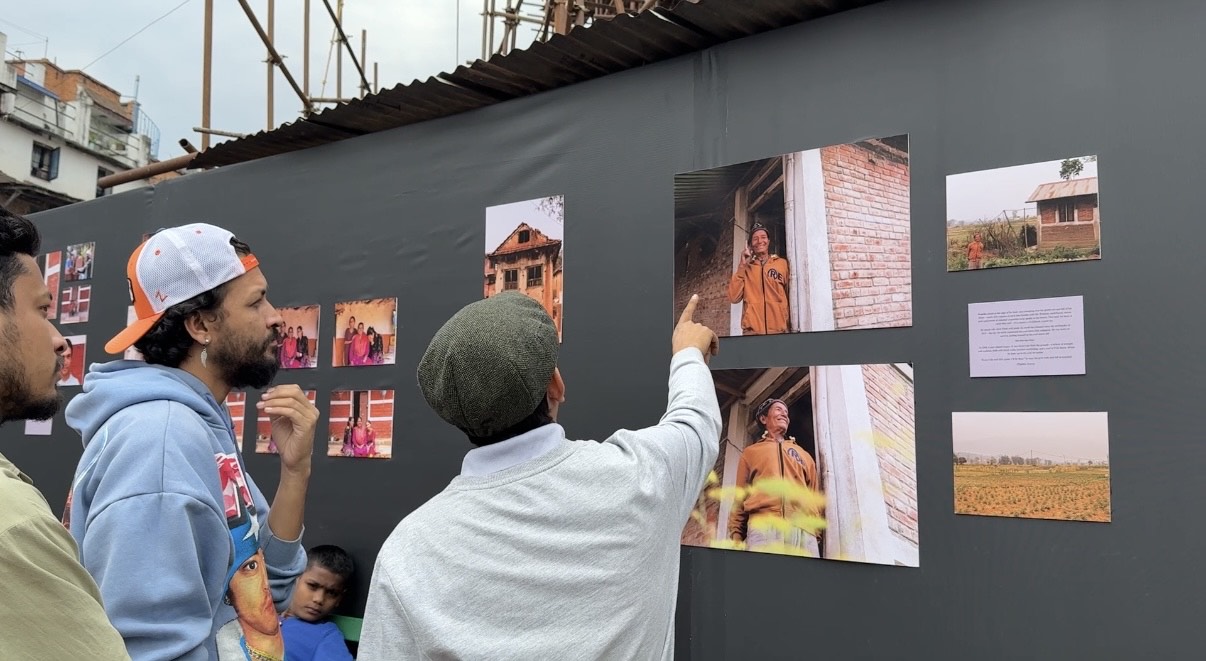On April 25, 2015, Nepal faced one of its most devastating natural disasters – the Gorkha Earthquake. Ten years later, on April 28, 2025, visitors gathered at the Patan Durbar Square walked down the memory lane in a photo-walk organized by Habitat for Humanity Nepal.

April 29, 2025
Kathmandu

An outdoor photo exhibition displays images on a dark gray wall in a bustling public square in Kathmandu, Nepal, surrounded by traditional architecture and local people.
Photo: Anushka Regmi
On April 25, 2015, Nepal faced one of its most devastating natural disasters – the Gorkha Earthquake. Ten years later, on April 28, 2025, visitors gathered at the Patan Durbar Square walked down the memory lane in a photo-walk organized by Habitat for Humanity Nepal.
In partnership with Lalitpur Metropolitan City and support of Nepal Picture Library and Kathmandu University, Habitat for Humanity Nepal has organized an extraordinary three-day event titled "10 Years of Gorkha Earthquake: A Journey of Resilience and Reconstruction" at the world heritage site.
The exhibition transformed the historic square into an open-air gallery, featuring rare photographs, personal testimonies, and stories of families that captured Nepal’s remarkable journey from devastation to determination. The event also included a panel discussion titled “Learning from the past, building for the future“.
As visitors moved through the exhibition, they encountered visual testimonies of how families, with the support of organizations like Habitat for Humanity Nepal, rebuilt their houses, their lives, and hope. The event was a powerful tribute, honoring not only the lives lost but also the unwavering spirit of communities to thrive.

Three Individuals Observe A Photo Exhibit Featuring Portraits And Landscapes Displayed On A Dark Gray Wall Outdoors.
Photo: Anushka regmi
The photo-walk also traced the emotional arc of the past decade – from scenes of collapsed buildings and shattered lives to lives in new, safer homes, thriving communities, and innovative construction techniques.
"We rebuilt more than just homes. We rebuilt dreams, dignity, and futures," Amleshwor Singh, Senior Manager-Research and MEAL, Habitat for Humanity Nepal said during the opening remarks.
The images served as a living memory and a powerful reminder of resilience stitched into the nation's fabric. "The earthquake shook the ground beneath us, but it could never shake our spirit. Every home we rebuilt was a defiance against despair,” said Lachhindra Maharjan, Program Director of Habitat for Humanity Nepal.
A major theme at the exhibition was Habitat Nepal’s pioneering work in green construction innovations. Recognizing bamboo as a sustainable, earthquake-resilient material, Habitat Nepal promoted bamboo framing technology as part of its rebuilding effort. This strategy not only provided safer structures but also boosted local economies, supported farmers, and responded to climate change challenges. "Building back better meant building back greener," emphasized Maharjan.
The event also brought into the spotlight how collaboration with governments and communities was crucial to scaling up impact. "It was a symphony of partnerships, powered by the dreams of thousands of Nepali families,” Maharjan added, acknowledging the organization's joint efforts with government bodies since 2018.
Founded in 1997, Habitat for Humanity Nepal had long focused on providing safe and affordable housing for the poorest communities. However, the 2015 earthquake demanded a shift in strategy. So, from 2016 to 2020, Habitat Nepal prioritized large-scale earthquake reconstruction efforts and supported over 2,503 families with safe and dignified housing, Singh said during his presentation.

By sharing valuable information and sparking inspiration, we aim to foster growth, innovation and brighter opportunities for future generations.
Contact us